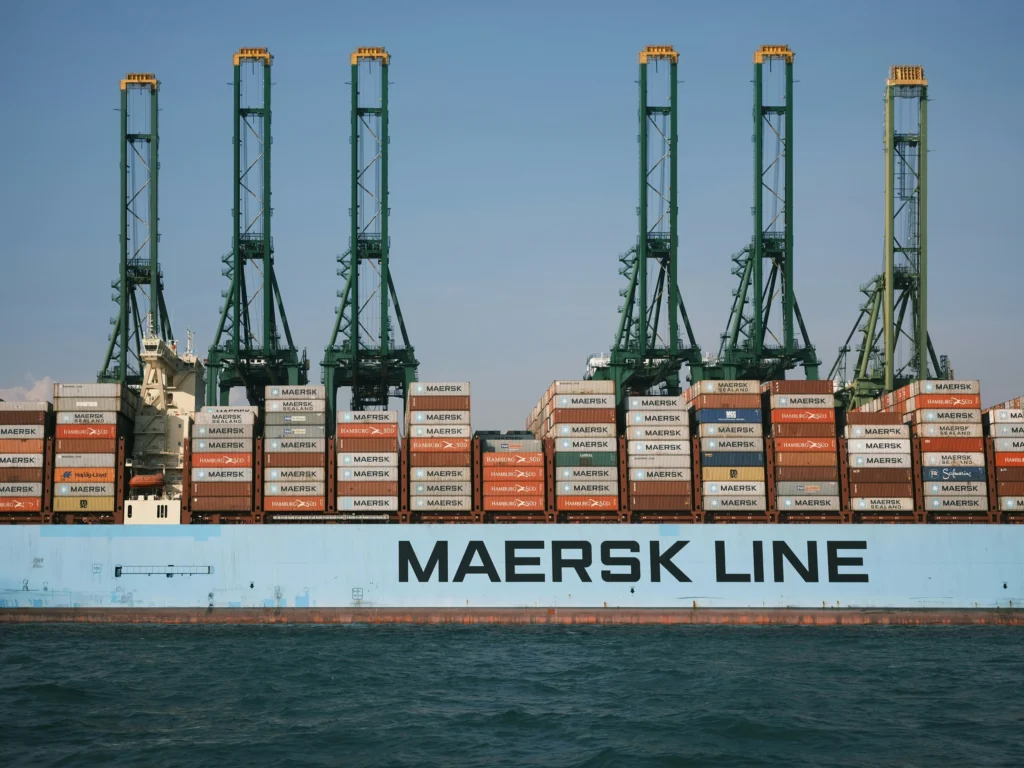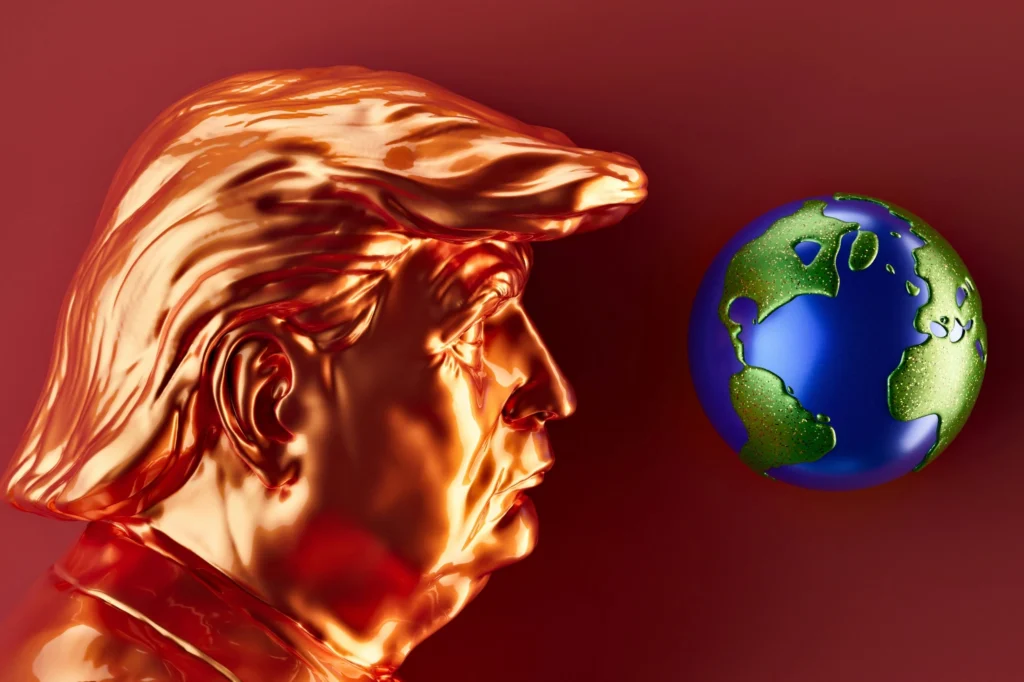Milton Friedman, the Nobel prize winner for economics in 1976, a staunch libertarian and free market capitalist, would likely support Trump’s tariffs today. Going further, he might even support tariffs as a concept in general today.
For anyone familiar with Milton Friedman’s body of work, you may be rolling your eyes right about now and wondering how the hell I can make such a bold claim. Well let’s explore this further and at the end you can decide, would Milton Friedman support tariffs today?
The Free Trade Champion – Milton Friedman Tariffs
First, let’s understand what Friedman actually thought about tariffs, and conveniently we can use his own words.
It is abundantly clear, Friedman hated tariffs, and they were the antithesis of everything he believed about how an economy should function. But let’s not get ahead of ourselves.
Analysing Milton Friedman Tariffs View
In the clip above, Friedman is clearly talking about two aspects of the economy, US governmental subsidies for the steel industry and Japanese state supported steel exports.
It is unequivocal that in this situation, Friedman is completely against the notion of levying tariffs against the Japanese and adopting protectionist policies at home for the US steel industry.
Broadly, he was of the same mindset, that tariffs and subsidies are always bad. But there is some context that is here that is not overt in his analysis. Japan by this point was a military ally to the US and there was no concern about the ability of the US to meet its steel burden for national defence.
Second, Japan had no capital controls in place like modern day China.
Capital Controls and Military Considerations
Lack of capital controls makes Friedman’s conclusion correct for the example of Japan he gave, as yes they would accept payment in USD and that USD would invariably make its way back to the US by one route or another.
With modern day China, international companies often pay an additional levy if they want to pay in USD as opposed to Chinese Yuan. In short they actively and agressively push for transactions to be made in Yuan – which completely destroys Friedman’s premise about the flow of money back to the US.
In fact, the opposite happens, China leverages its state sponsored businesses to bolster their own native currency and US businesses lose capital and industry. Specifically with steel production, which China is now the global powerhouse it also has major defence considerations.
Steel is needed in abundance for the military industrial complex and relying on a potential adversary for your defence capability is nuts on the face of it.
It Goes Beyond China – Friedman Free Trade vs Modern Trade
You see, the 1970s and 1980s presented a very different world. Let’s take a look at the free trade vs modern trade reality.
When Friedman was at his academic peak the following key aspects of the global economy were:
- The EU had not been formed as a trading block.
- China was largely focused on domestic growth and restricting birthrates.
- The Soviet Union was still existent.
- The US was THE global trade powerhouse.
Free trade made a lot of sense in this context. Not only would it promote US goods overseas but encourage goods to come into the US and reduce the financial burden on US consumers.
But Milton Friedman was not one to be pigeonholed into a specific position and he was a very big pragmatist. If the world changed around him, his theories were so sound he could adapt them, and in turn pivot to new positions without sacrificing any integrity.
I am certain given the logical framework that separates the Japanese subsidised industry and the Chinese one, Milton Friedman would at the very least need to reassess his stance. And consider which actions necessitated a move towards re-establishing a free market.

Plot Twist: When Friedman Changed His Mind
Here’s an example of doing just that. Friedman was a big proponent of immigration in his earlier years. He would often harken back to the old days where the US benefited from mass immigration and the economy saw overwhelmingly positive effects.
But the immigration landscape changed while he was alive, with US citizens becoming disillusioned with immigration and finding it difficult to reconcile the damage it was doing to the economy with Friedman’s ultra-positive perspective on the matter.
The Pivot While Maintianing Academic Consistency
And effortlessly, Friedman realised the issue at the core of the problem. He understood historic immigration worked so well because there was no state or federal safety net for newcomers. They had to work hard to survive and thrive.
He pivoted from a position of open borders without restriction to stating “you can’t have free immigration and a welfare state.” His theory held true in both regards – on the one hand, without a welfare state, open borders absolutely work but add in the governmental support and it fails catastrophically.
Which brings us neatly onto trade and why Friedman would likely pivot from his original position about tariffs.
The Game Has Changed – Milton Friedman Tariffs
Friedman’s tariff stance was taken absent of the EUs aggressive subsidies and Chinese state-backed enterprises. It was essentially absent of foreign government intervention.
He anticipated a level playing field whereby foreign governments would play the same free trade game – which would have been beneficial for everyone involved. But aggressive foreign state intervention in industries to isolate the US and diminish its trade power were not a factor Friedman had to consider.
He was operating in a world where global free trade was relatively freer (not to the level Friedman would have liked, but markedly freer compared to today).
Today, the US faces unique economic and trade challenges largely due to foreign government policies. And I am almost certain that Friedman would not only acknowledge this but also have a solution that fit his model.
Would Milton Friedman Support Tariffs?
A question every libertarian has asked themselves at some point, what would Milton Friedman do given the new trade landscape. He certainly wouldn’t call for inaction where there is state intervention (even overseas) – because the one thing Friedman hated was governmental power getting in the way of people’s choice.
Friedman would likely see tariffs as a necessity today – a tool for anti-government intervention that was significantly impacting the free market he so faithfully championed.
He would see the tariffs as a level of protectionism but also understand they were necessary to prevent market manipulation from outside government policy.
How Would Milton Friedman Approach Tariffs?
With that said, Friedman would want a more nuanced approach to tariffs rather than the sweeping and punitive tariffs the Trump administration is using. Friedman would want to identify specific industries where overseas state entities have rigged the game and then use selective tariffs to balance the trade in the short term – with a view to seeking agreement from other governments to remove their harmful measures.
He would also argue the US domestic policy needs to be loosened in order for private enterprises to be able to compete naturally without hindrance like heavy regulation and tax burdens from the government.
In this respect, Milton Friedman would want to address the issue both from a short term economic perspective and a ground up domestic output and innovation perspective. He would undoubtedly want the minimum wage gone, and US industries to be able to optimally function to compete against overseas threats.
In short, he would want the shackles of US domestic governmental policy to be removed alongside any tariff measures.

Milton Friedman – Economic Pragmatism vs Ideology
There is a well-known concept that modern problems need modern solutions. Friedman would understand that ultimately, his free market can only function absent of ANY governmental intervention.
He would be alarmed by the amount of inflation caused by erroneous government policy – especially around trade and he would without question want to remedy the problem in its entirety. Which means both domestic and overseas reform.
You May Also Want to Know
Did Milton Friedman Ever Change His Mind on Major Economic Policies?
Milton Friedman’s goal was always to reach a free market (or as close to one as possible). That meant his economic policy suggestions were always targetted to that end. In circumstances where a welfare state or government subsidies caused disruption to a free market (such as immigration policies), Friedman was flexible about his approach. He started his career with a very pro-immigration stance, but adjusted his position in light of welfare spending on immigration.
What’s the Difference between Free Trade and State-Subsidised Trade?
Free trade is allowing the markets to operate without restrictions such as government intervention. This intervention can take various forms such as tariffs, subsidies and regulation. State-subsidised trade is the antithesis of a free market because it manipulates and restricts the flow of goods and services. For example, China utilises heavy state subsidies which allow companies to expand and dominate global trade, to the detriment of companies in other countries without the state financial support.
How Has Global Trade Changed Since Friedman’s Era?
Global trade has changed dramatically since Friedman was discussing tariffs. The key difference is the US dollar was used to purchase goods and services overseas, which Friedman reasoned would eventually make its way back into the American economy. Today, there are strict money controls in places like China that not only restrict the flow of any US dollars back to the American market, but also prohibit the US dollar from being used to buy goods and services.
Can You Be Pro-Free Market and Pro-Tariffs at the Same Time?
Yes, you can adopt the policy Milton Friedman did and be pragmatic – with your end goal always being a free or freer market. If tariff policies can make progress toward restoring a free market then you can absolutely be pro-free market and pro-tariffs. The devil is of course in the details and you will need to judge whether the end result of any tariff policy will open up the global trade markets or not.





